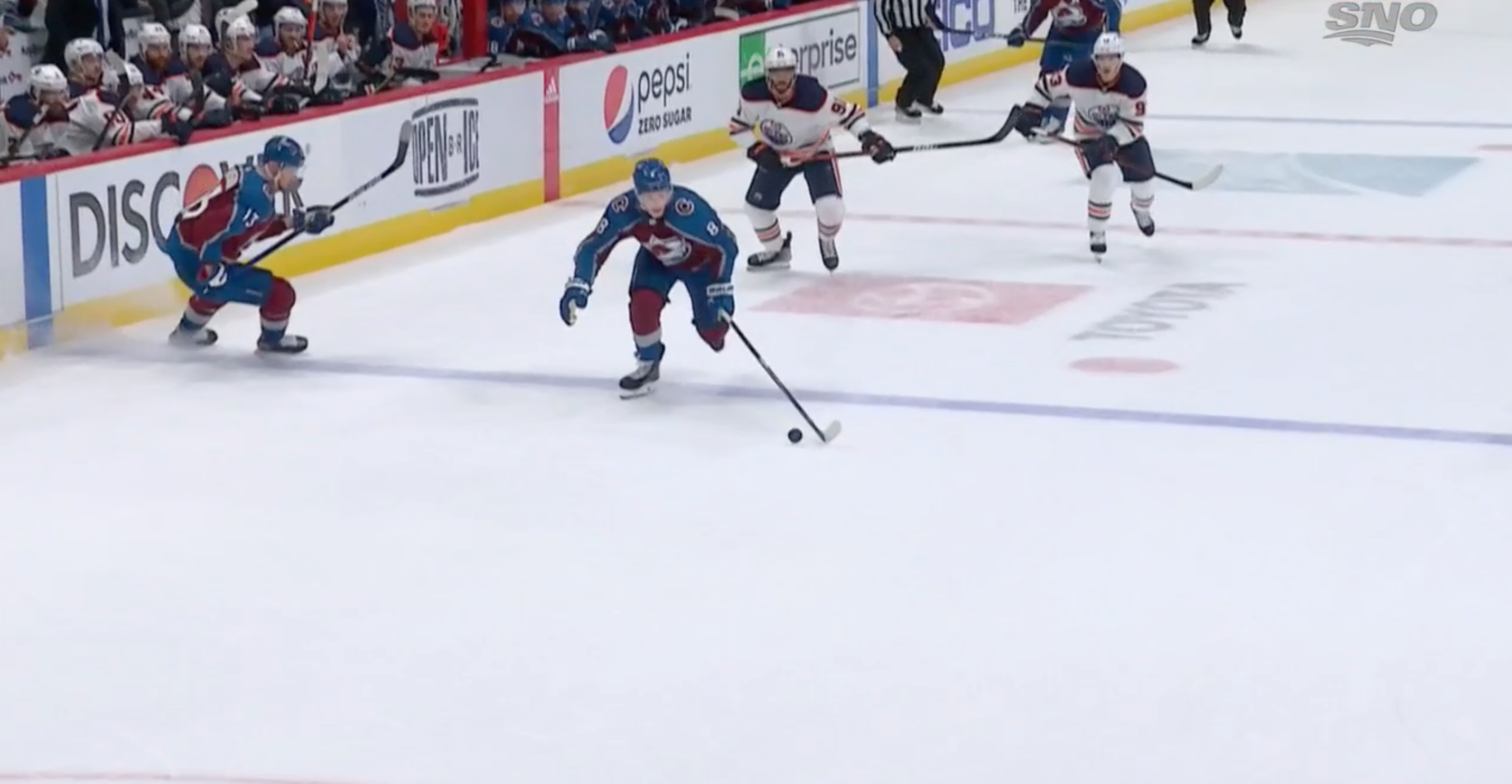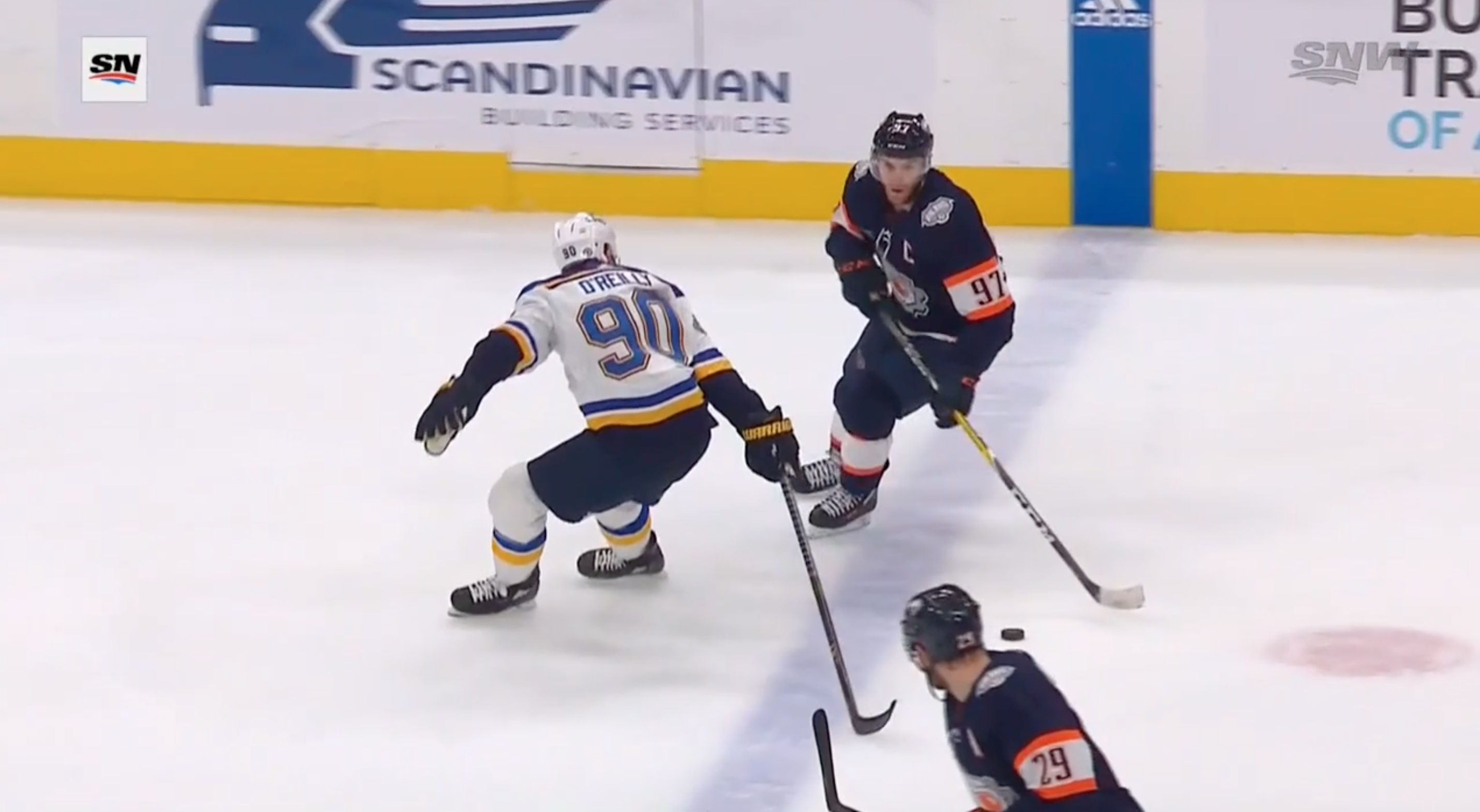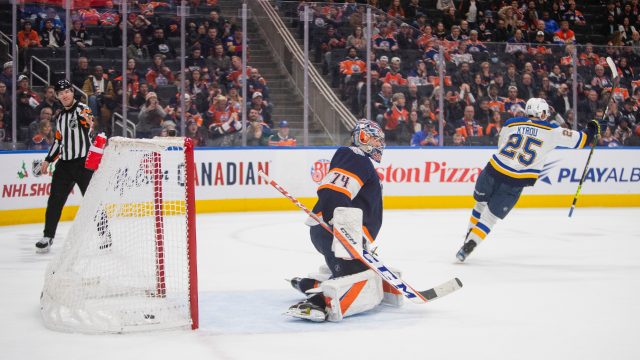
Connor McDavid has cultivated a very particular public-facing persona since entering the National Hockey League eight seasons ago.
Calm. Collected. Even keeled. While undoubtedly passionate on the ice, rarely, if ever, has the NHL’s preeminent superstar’s flashy hands and blazing speed been matched by an equally eye-catch quote or outburst off of it.
That’s what made McDavid’s Thursday night comments, following a negated overtime winner that would have capped off one of Edmonton’s gutsiest wins of the year, so surprising.
“The league’s got to clarify some of these rules,” he said. “What’s a kick? What’s offside? What’s goalie interference? It depends on the night I guess.”
Those words don’t leave much to the imagination. Clearly disgruntled, McDavid let it be known that his initial reaction to the way things transpired at Rogers Arena on Thursday night was baffling.
Almost immediately, the Oilers captain pointed to another goal, similar in build-up, but wildly different in outcomes, wondering out loud why Cale Makar’s game one playoff goal against Edmonton six months ago was ruled any differently to his blueline entry.
Others, similarly, drew conclusions in the same vein as McDavid. The Oilers broadcast called the review “Cale Makar-ish”, Oilers coach Jay Woodcroft began his postgame press conference by referencing last year’s conference final, while the Avalanche defender’s name trended on Twitter almost immediately.
But the two cases are entirely different in nature.
Exploring both goals with a fine-toothed comb, it’s quite clear exactly what differentiates both of these markers. And, in fact, both cases show how the NHL has been consistent with its ruling on offsides in recent years through one notable aspect that is similar between the two.
Possession
The name of the game, as they say, is possession of the puck.
On both of these controversial calls, it’s the fact that neither has possession, at least in accordance with the NHL’s rules, that serves as the decisive factor.
McDavid, attacking St. Louis Blues centreman Ryan O’Reilly with a full head of steam, makes a patented cut to the middle of the ice in a move that’s basically a staple of every McDavid highlight reel goal.
The Blues perennial Selke contender, however, earns his pay cheque on this one, using an active stick to force the puck off of McDavid’s blade. While McDavid earns the zone, he doesn’t quite do so cleanly. His and O’Reilly’s sticks collide, allowing the puck to slide ever so slightly ahead before McDavid re-engages and gathers control deeper into the St. Louis zone.
A release from the NHL’s public relations department highlights exactly this, and why the goal is ultimately determined not to count.
“Edmonton’s Connor McDavid preceded the puck into the offensive zone without possession and control and, therefore, was in an off-side position prior to Leon Draisaitl’s goal” the statement reads.
So, despite his best efforts, the ruling is that McDavid doesn’t have possession, losing it if ever so briefly after O’Reilly’s challenge at the blueline.
Notably, however, that isn’t the only significant wording in the statement. What about the first few words of the NHL release, how McDavid ‘preceded the puck into the offensive zone?’ Valeri Nichushkin was well ahead of Makar on the defenceman’s game one snipe, which is the whole reason we find ourselves in this mess in the first place.
Offside position
Makar’s goal, controversial as it may be, was nothing short of electric. Arguably the league’s most dynamic offensive defenceman since Bobby Orr, Makar strips Evander Kane in the neutral zone, skates headlong into Edmonton territory, and rips a laser beam bar-down on Mike Smith.
As Makar was preparing to enter the offensive zone, though, Nichushkin was racing to exit and clear it. When Makar hits the blue line he pushes the puck ahead and it crosses without directly contacting his stick. This allowed Nichushkin to exit in time. Makar doesn’t touch the puck (control it) until the previously offside Nichushkin clears, so he enters the zone legally.
It was a delayed offside until Nichushkin got out. And once he cleared, Makar was safe to play the puck on.

As it turns out, the same puck control detail that kills Draisaitl’s goal is the clever minutiae that gives Makar his.
McDavid, for all his game-breaking speed, ultimately has both his skates in the offensive zone before the puck enters and prior to regaining full possession. Therefore, he put himself offside. Makar, on the other hand, doesn’t himself enter the zone before the puck, and he doesn’t regain full possession of it until Nichushkin is back onside.

Where is the consistency?
Maybe McDavid is correct that parts of the NHL rulebook could be defined a little more clearly. He does call out the league over other matters like goalie interference and what a distinct kicking motion is.
For offside reviews like this, though, it turns out the league is actually pretty good when it comes to consistency.
Following Makar’s goal last May, Sportsnet’s Elliotte Friedman put together the bible of understanding the offside rule in this context, and through multiple examples, it was clear that as long as the puck wasn’t in possession — in this case meaning the puck is on the attacking player’s stick — the play was ruled onside.
Unfortunately for McDavid, that just isn’t the case here. While a valiant effort, McDavid’s heroics are simply negated by a strong defensive play and a poorly timed entry, wiping away a game-winner and allowing St. Louis to complete their comeback in a tightly contested shootout.






